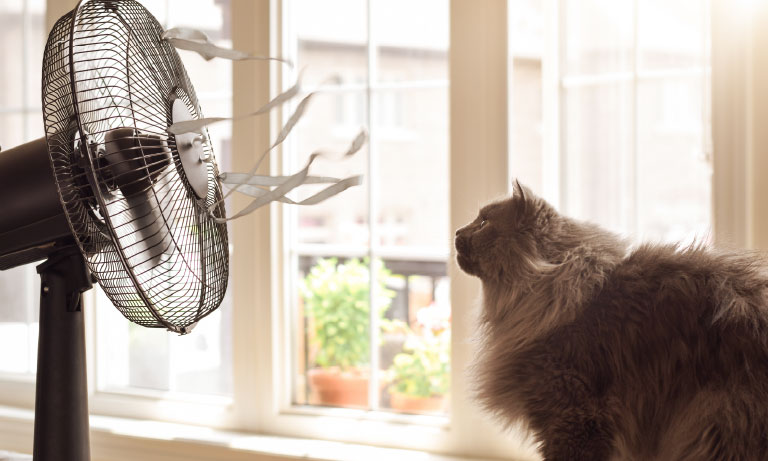British Veterinary Association responds to competition watchdog’s provisional decision and welcomes call for vet practice regulation
15 Oct 2025
With high temperatures forecast this week, BVA has shared top tips to help pet owners keep their animals safe.

With heat health warnings in place for many parts of the UK this week, the British Veterinary Association (BVA) is urging pet owners to take extra precautions to keep their animals safe and to act quickly if they spot early signs of heatstroke.
Each year, vets across the country report seeing large numbers of cases involving pets who require treatment for heat-related conditions such as heatstroke, burnt paw pads, sunburn and breathing difficulties, some of which can sadly be fatal.
Dogs may particularly struggle to stay cool in high temperatures and humid conditions since, unlike humans, they are unable to cool down quickly through sweating, making them vulnerable to overheating. Even a very short walk in the middle of the day or being locked in a car for a few minutes can prove to be fatal. Flat-faced breeds such as English or French bulldogs and pugs are at even greater risk, as their short muzzles can make breathing difficult, and therefore they struggle to cool down through panting, which is a dog’s main way to cool its body temperature. Overweight animals and densely coated animals are also at increased risk.
Like dogs, rabbits and guinea pigs cannot sweat or pant to regulate their body temperature and cool down, which is why it’s important that their hutch or run isn’t exposed to direct sunlight at any time of the day.
British Veterinary Association President Dr Elizabeth Mullineaux said:
“Each summer, vets see pets suffering from heat-related problems and illnesses, such as heatstroke, breathing problems, burnt paw pads and sunburn. Unfortunately, these can often be fatal. With heat warnings in place, make sure your animals have access to fresh drinking water, good ventilation and shade from direct sunlight at all times. When it comes to walking or exercising dogs, don’t take them out during the heat of the day- stick to early morning or late evening walks- and never leave them inside a car, caravan or conservatory even for a little while. If you're concerned about your pet’s health, contact a vet as quickly as possible as heat-related illnesses can be fatal.
“It’s important to recognise early signs of heatstroke as quick action could save your pets’ lives. In dogs, signs include heavy panting, drooling, restlessness, bright red or very pale gums, and lack of coordination. Signs of heatstroke in rabbits include drooling, salivating, lethargy, short and shallow breaths, red and warm ears, wet nose and seizures. If you suspect heatstroke, take your pet to a cool, well-ventilated place, give it small amounts of cold water to drink if possible, and pour cold water over it to cool it down, before contacting your vet.”
BVA’s Voice of the Veterinary Profession survey during 2022’s record-breaking heatwave revealed that half (51%) of all vets in the UK saw cases of animals requiring treatment for heat-related illness. Dogs were the most common animal seen with heat-related conditions reported by 51% of small animal vets, followed by rabbits (9%) and cats (6%).
Get tailored news in your inbox and online, plus access to our journals, resources and support services, join the BVA.
Join Us Today